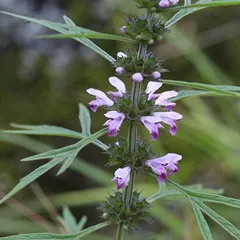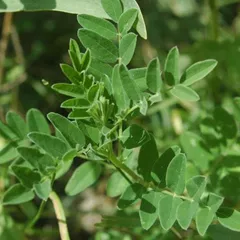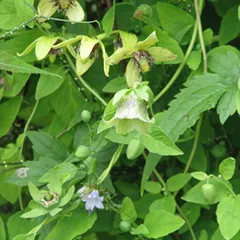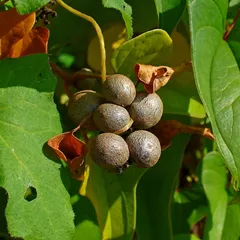Shi Quan Da Bu Tang
Shi Quan Da Bu Tang
Chinese: 十全大补汤
Pinyin: Shi Quan Da Bu Tang
Other names: All-Inclusive Great Tonifying Decoction
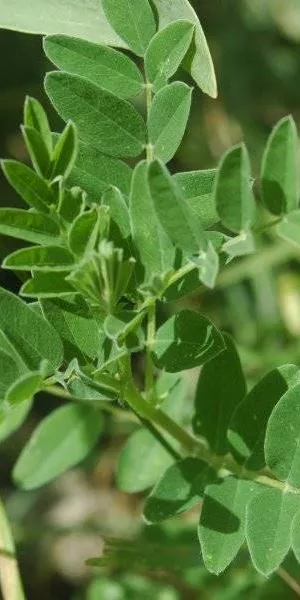
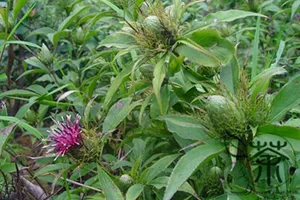
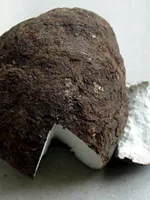
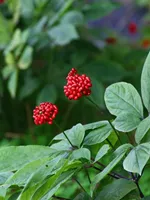




Shi Quan Da Bu Tang
Shi Quan Da Bu Tang
Chinese: 十全大补汤
Pinyin: Shi Quan Da Bu Tang
Other names: All-Inclusive Great Tonifying Decoction
Number of ingredients: 10 herbs
Formula category: Formulas that tonify Yin and Yang
Conditions for which it may be prescribed: AnemiaChronic urticariaNonhealing ulcers and three other conditions
- Warms and tonifies Qi
- Warms and tonifies Blood
Contraindications: Contraindicated for symptoms with a thick tongue coating or a strong and... Contraindicated for symptoms with a thick tongue coating or a strong and forceful pulse. see more
Source date: 1180 AD
Source book: Transmitted Trustworthy and Suitable Formulas
The information provided here is not a replacement for a doctor. You shouldn't use it for the purpose of self-diagnosing or self-medicating but rather so you can have a more informed discussion with a professional TCM practitioner.
Shi Quan Da Bu Tang is a 10-ingredient Chinese Medicine formula with Milkvetch Roots (Huang Qi) as a principal ingredient.
Invented in 1180 AD, it belongs to the category of formulas that tonify Yin and Yang. Its main actions are: 1) warms and tonifies Qi and 2) warms and tonifies Blood.
In Chinese Medicine health conditions are thought to arise due to "disharmonies" in the body as a system. These disharmonies are called "patterns" and the very purpose of herbal formulas is to fight them in order to restore the body's harmony.
In this case Shi Quan Da Bu Tang is used by TCM practitioners to fight patterns like Qi and Blood Deficiency or Kidney-Deficiency. From a Western Medicine standpoint, such patterns can give rise to a range of conditions such as absence of menstruation, scanty menstruation or anemia for instance.
On this page, after a detailed description of each of the ten ingredients in Shi Quan Da Bu Tang, we review the patterns and conditions that Shi Quan Da Bu Tang helps treat.
The ten ingredients in Shi Quan Da Bu Tang
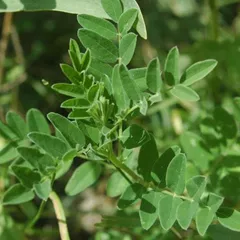
Huang Qi is a king ingredient in Shi Quan Da Bu Tang. Like the name indicates, it means it has more power than other ingredients in the formula.
1. Milkvetch Roots (Huang Qi)
Huang Qi is sweet and warm. It is considered one of the top Qi tonifying herbs in TCM. It is entirely Yang in nature and it strongly stimulates the Qi dynamic. It raises the Yang and disperses Blood and Essence throughout the entire body.
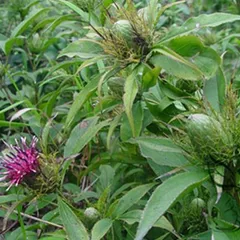
2. Atractylodes Rhizomes (Bai Zhu)
Part used: Dried rhizome
Nature: Warm
Meridian affinity: SpleenStomach
Category: Tonic herbs for Qi Deficiency
In general Bai Zhu's main actions are as follows: "Tonifies the Spleen Qi. Fortifies the Spleen Yang and dispels Damp through urination. Tonifies Qi and stops sweating. Calms restless fetus when due to Deficiency of Spleen Qi."
In the context of Shi Quan Da Bu Tang, it is used because it strengthens the Spleen and dries Dampness.
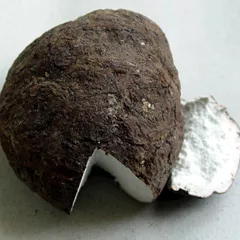
3. Poria-Cocos Mushrooms (Fu Ling)
Part used: Dried sclerotium
Nature: Neutral
Taste(s): Sweet
Meridian affinity: HeartKidneyLungSpleen
Category: Herbs that drain Dampness
In general Fu Ling's main actions are as follows: "Encourages urination and drains Dampness. Tonic to the Spleen/Stomach. Assists the Heart and calms the Spirit."
In the context of Shi Quan Da Bu Tang, it is used because it removes Dampness and assists Ginseng and Codonopsis root in strengthening the Spleen..
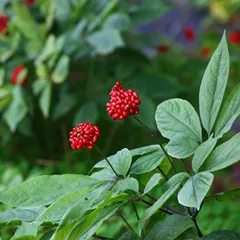
4. Ginseng (Ren Shen)
Part used: Dried root
Nature: Warm
Meridian affinity: HeartLungSpleen
Category: Tonic herbs for Qi Deficiency
Ren Shen is a a powerful tonic for the Spleen Qi. Today however it is often substituted for Codonopsis root (Dang Shen), which plays a similar role and is significantly less expensive.
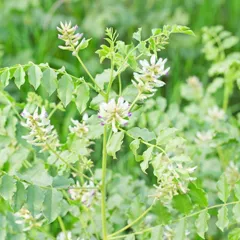
5. Liquorice (Gan Cao)
Part used: Dried root and rhizome
Nature: Neutral
Taste(s): Sweet
Meridian affinity: HeartLungSpleenStomach
Category: Tonic herbs for Qi Deficiency
In general Gan Cao's main actions are as follows: "Tonifies the Basal Qi and nourishes the Spleen Qi. Clears Heat and dispels toxicity. Moistens the Lungsexpel phlegm and stop coughing. Relieves spasms and alleviates pain. Harmonizes and moderates the effects of other herbs."
In the context of Shi Quan Da Bu Tang, it is used because it warms and regulates the Middle Burner and moderates the draining property of Poria-cocos mushrooms.
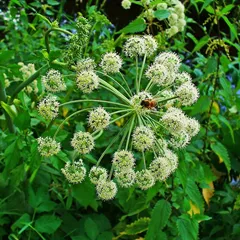
6. Dong Quai (Dang Gui)
Part used: Dried root
Nature: Warm
Meridian affinity: HeartLiverSpleen
Category: Tonic herbs for Blood Deficiency
In general Dang Gui's main actions are as follows: "Tonifies the Blood. Lubricates the Intestines. Relieve constipation. Promotes circulation and dispels Bi Pain. Reduce Dysmenorrhea and help with irregular menstruation."
In the context of Shi Quan Da Bu Tang, it is used because it enters the Liver and Heart to tonify and invigorate the Blood.

7. Prepared Rehmannia (Shu Di huang)
Part used: Prepared dried root tuber
Nature: Warm
Taste(s): Sweet
Meridian affinity: KidneyLiver
Category: Tonic herbs for Blood Deficiency
Shu Di huang has a very strong tonifying effect on the Liver and Kidneys and is said to nourish the Yin of the Blood.
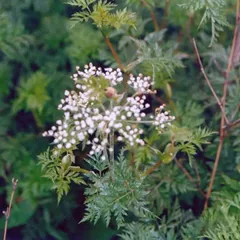
8. Szechuan Lovage Roots (Chuan Xiong)
Part used: Dried rhizome
Nature: Warm
Taste(s): Pungent
Meridian affinity: GallbladderLiverPericardium
Category: Herbs that invigorate the Blood
Chuan Xiong facilitates the flow of Blood through the vessels, alleviating symptoms such as headache, dizziness, blurred vision and pain.
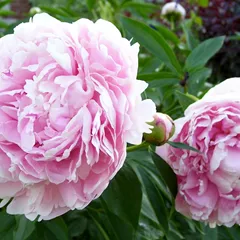
9. White Peony Roots (Bai Shao)
Part used: Dried root
Nature: Neutral
Meridian affinity: LiverSpleen
Category: Tonic herbs for Blood Deficiency
Bai Shao helps reduce the muscle spasms caused by Blood-Deficiency and it is particularly well-suited to treat abdominal pain. Together with Prepared rehmannia (Shu Di huang), it has a strong tonifying effect on the Blood.
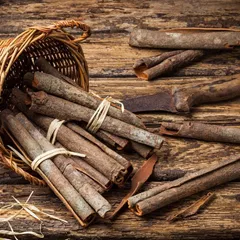
10. Cinnamon Bark (Rou Gui)
Rou Gui is acrid and hot. It tonifies the Fire of Gate to assist the Yang. Its warmth enters the Blood to open the vessels and facilitate the Blood movement. It also stimulates the Qi dynamic and transformation throughout the whole body.
Conditions and patterns for which Shi Quan Da Bu Tang may be prescribed
It's important to remember that herbal formulas are meant to treat patterns, not "diseases" as understood in Western Medicine. According to Chinese Medicine patterns, which are disruptions to the body as a system, are the underlying root cause for diseases and conditions.
As such Shi Quan Da Bu Tang is used by TCM practitioners to treat two different patterns which we describe below.
But before we delve into these patterns here is an overview of the Western conditions they're commonly associated with:
Absence of menstruation Scanty menstruation Anemia Nervous exhaustion Chronic urticaria Nonhealing ulcers
Again it wouldn't be correct to say "Shi Quan Da Bu Tang treats absence of menstruation" for instance. Rather, Shi Quan Da Bu Tang is used to treat patterns that are sometimes the root cause behind absence of menstruation.
Now let's look at the two patterns commonly treated with Shi Quan Da Bu Tang.
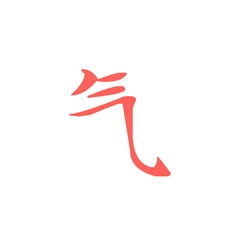
Qi is one of Chinese Medicine's vital subtances. Learn more about Qi in Chinese Medicine
Qi and Blood Deficiency
Pulse type(s): Slowed-down (Huan), Weak (Ruo), Fine (Xi)
Tongue coating: Partial absence of coating
Tongue color: Pale
Symptoms: Edema Fatigue Vertigo Anxiety Insomnia Dry hair Dry skin Dry lips Tingling Numbness Dry eyes Pale face Dizziness Pale lips Hair loss Tiredness Sore back Weak voice Sore knees Depression Low energy Poor memory Pale tongue Watery milk Palpitations Listlessness Loose stools Poor appetite Scanty periods Blurred vision Low milk supply Pale complexion General weakness Aversion to speak Pale color periods Shortness of breath Numbness in the skin Spontaneous sweating Lower abdominal pain Pale menstrual blood Numbness in the limbs Dream disturbed sleep Dull menstrual cramps Feeling of bearing down Thin and watery periods Withered and brittle nails Thin body lacking strength Pain relieved with massage Lethargic and withdrawn state Spontaneous flow of breast milk Menstruation decreases gratually No feeling of distension of the breasts Insufficient or absent lactation after childbirth
Shi Quan Da Bu Tang is sometimes prescribed by TCM practitioners to treat Qi and Blood Deficiency. This pattern leads to symptoms such as general weakness, fatigue, weak voice and pale face. Patients with Qi and Blood Deficiency typically exhibit slowed-down (Huan), weak (Ruo) or fine (Xi) pulses as well as Pale tongue with thin white coating .
The Qi and Blood are from the some origin and these two elements are transformable between each other. The Qi creates the Blood, and vice versa the Blood supplies Qi. Therefore it is quite common both patterns appear at the same time.
When general Qi is Deficient, the patients lack the energy to... read more about Qi and Blood Deficiency

The Kidneys is a so-called "Zang" Organ. Learn more about the Kidneys in Chinese Medicine
Kidney-Deficiency
Pulse type(s): Deep (Chen), Weak (Ruo)
Tongue color: Pale
Symptoms: Tinnitus Back pain Knee pain Dizziness Sore back Pale face Cold limbs Weak knees Amenorrhea Late period Malar flush Night sweats Restlessness Scanty periods Feeling of cold Frequent urination Pale menstrual blood Thin and watery periods Feeling of heat in the evening
Shi Quan Da Bu Tang is sometimes prescribed by TCM practitioners to treat Kidney-Deficiency. This pattern leads to symptoms such as scanty periods, pale menstrual blood, back pain and knee pain. Patients with Kidney-Deficiency typically exhibit deep (Chen) or weak (Ruo) pulses as well as a pale tongue.
Formulas similar to Shi Quan Da Bu Tang
Ba Zhen Yi Mu Tang is 80% similar to Shi Quan Da Bu Tang
Ba Zhen Tang is 80% similar to Shi Quan Da Bu Tang
Tuo Li Xiao Du San is 64% similar to Shi Quan Da Bu Tang
Ren Shen Yang Rong Tang is 64% similar to Shi Quan Da Bu Tang
Sheng Yu Tang is 60% similar to Shi Quan Da Bu Tang
Ren Shen Zi Xie Tang is 60% similar to Shi Quan Da Bu Tang

